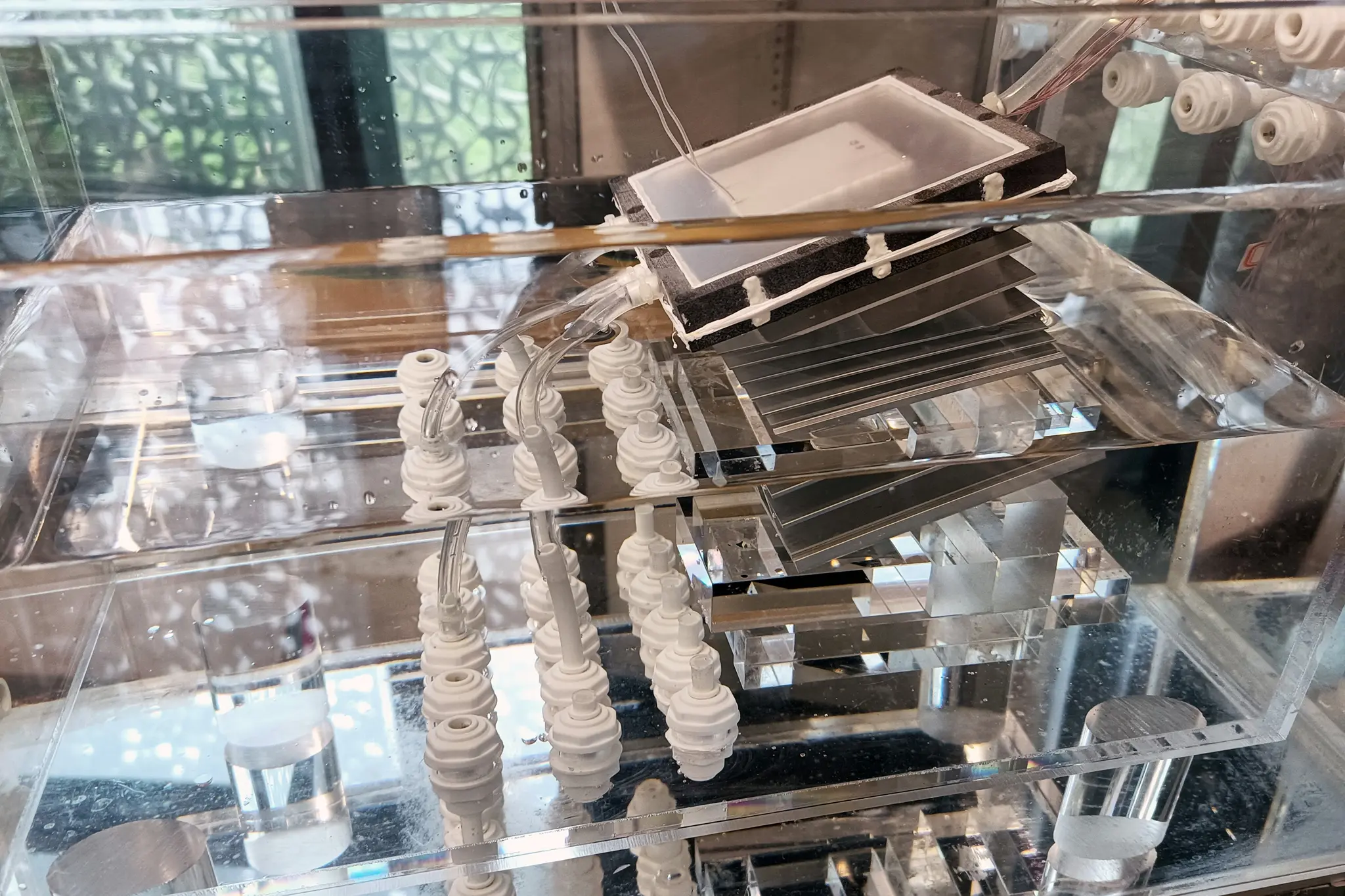The configuration of the device allows water to circulate in swirling eddies, in a manner similar to the much larger “thermohaline” circulation of the ocean. This circulation, combined with the sun’s heat, drives water to evaporate, leaving salt behind. The resulting water vapor can then be condensed and collected as pure, drinkable water. In the meantime, the leftover salt continues to circulate through and out of the device, rather than accumulating and clogging the system.
The new system has a higher water-production rate and a higher salt-rejection rate than all other passive solar desalination concepts currently being tested.
The researchers estimate that if the system is scaled up to the size of a small suitcase, it could produce about 4 to 6 liters of drinking water per hour and last several years before requiring replacement parts. At this scale and performance, the system could produce drinking water at a rate and price that is cheaper than tap water.



You’re living in a world where some very rich countries such as Saudi Arabia are absolutely desperate for desalination capacity.
Of course, and That’s fine so long as it benefits everyone there equally. But Would you wager me the Saudi Government (or any goverment) is going to be that fair about it ?
Either way we have to wait and see where the Chinese developers take this to next.
I’m just pointing out that - irrespective of fairness - there is no shortage of potential funders if thyis technology is practical